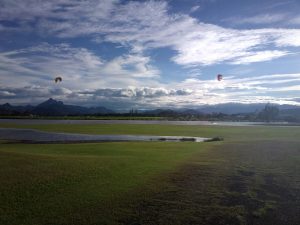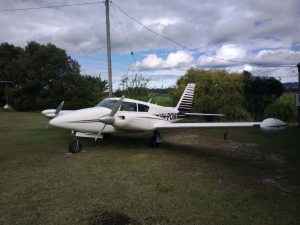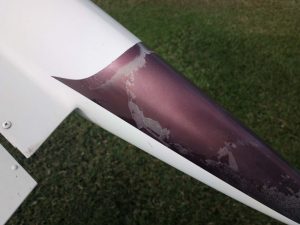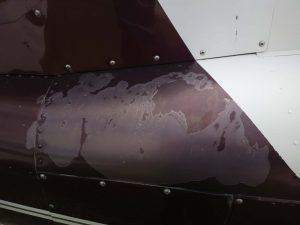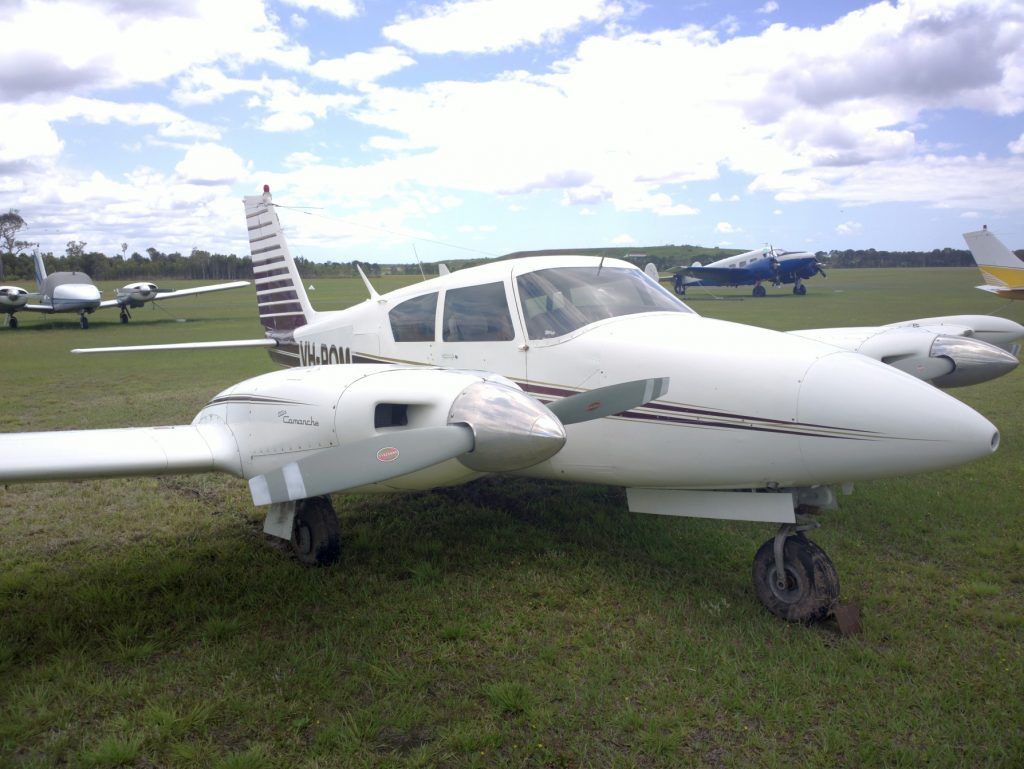Initial disassembly
On Monday (6th June) we drained several litres of water out of the left main fuel tank (it’s not exactly well-sealed and Murwillumbah got quite a bit of rain) and taxiied the plane to the hangar. First thing to do was a quick inspection of the main wing spar. Comanches have had some serious problems with wing spar corrosion, as a direct result of an Airworthiness Directive that required a drain valve fitted under the auxiliary tanks. Poor sealing around this valve resulted in engine exhaust entering the wing and corroding the main spar. A corroded main spar generally means that the aircraft is written-off; repairs are worth more than the plane. Shortly after these problems appearded, a second Airworthiness Directive was issued telling everyone to remove the drain valve and go back to Piper’s initial design.
Luckily, VH-POM only has minor surface corrosion here (as would be expected from any piece of aluminium that’s fifty years old and has spent a lot of time in Queensland). It should clean up well with a bit of bead-blasting, and then we can repaint it with corrosion-resistant paint.
With that done, we removed the nose cowl, which revealed the voltage regulators (upgraded, but still mechanical – no fancy electronics here!), paralleling relay (which only has one wire connected to it and therefore probably isn’t doing very much), heater (missing fuel control), and radar (mounted off-centre and hidden behind the standard fibreglass nose).
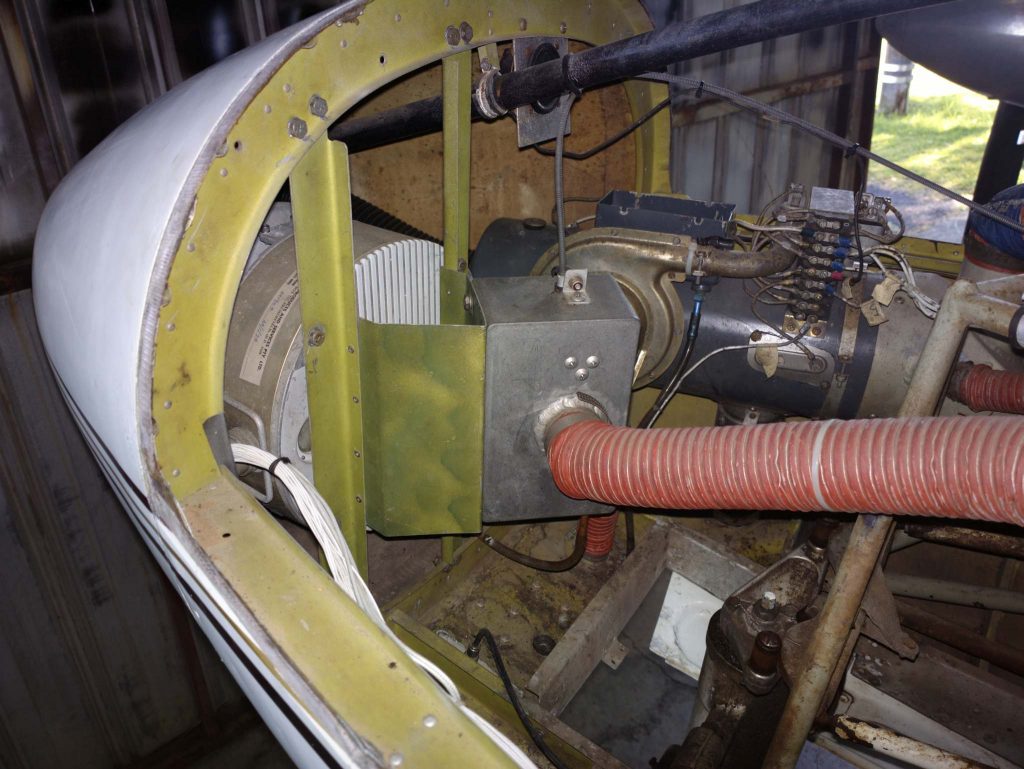
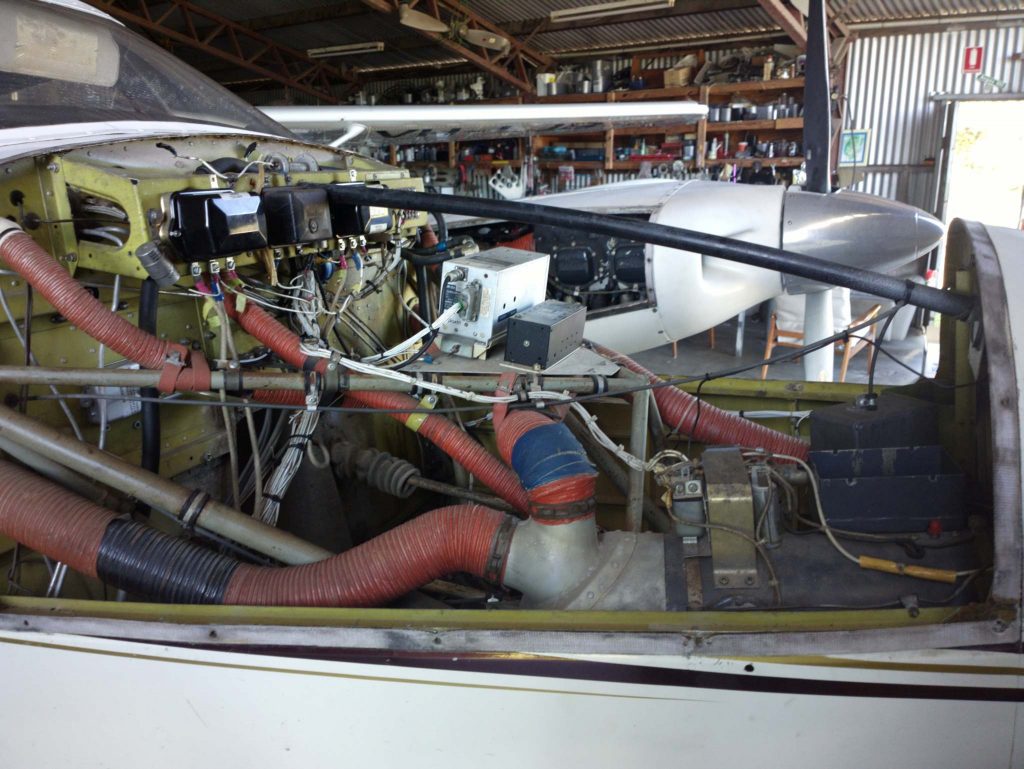
We then progressed to removing the fuel bladders. The Comanche’s two main tanks (30gal each) and two auxiliary tanks (15gal each) hold fuel in rubber bladders, which are clipped onto the inside of the wing. Mains are between the engines and fuselage, auxiliaries are under the engine nacelles and extending outwards. There are two very common fuel-related problems for Comanches. The first is that the nice bowl-shaped cutout in the wing around the fuel filler really likes to collect water. If the filler cap doesn’t seal perfectly, the cutout neatly funnels all this water straight into the fuel tank. The second problem is that the rubber bladders tend to go hard and brittle over time, especially if the plane is parked outside (as VH-POM has been for many years) without much fuel in them (fuel helps to keep them soft).
What we found was a huge amount of corrosion in the wing cutout for the left tank (the fuel level measurement system for that tank has just about rusted away), and an extremely old (built in 1968) bladder in the left auxiliary tank, but apart from that it’s all pretty good. The two right bladders and the left main bladder are all “new” (ie less than 20 years old) and all the other fuel senders look to be fairly new too.
With the fuel system largely under control (in that we know what it needs) we did a compression test on the engines. All looking good so far; compression was acceptable on all cylinders. We found evidence of significant (repaired) damage all over the inner-left part of the plane – patches added to the wing, doubler-plates on parts of the engine cowling, repairs to the propeller spinner, and the engine has been replaced not too long ago.
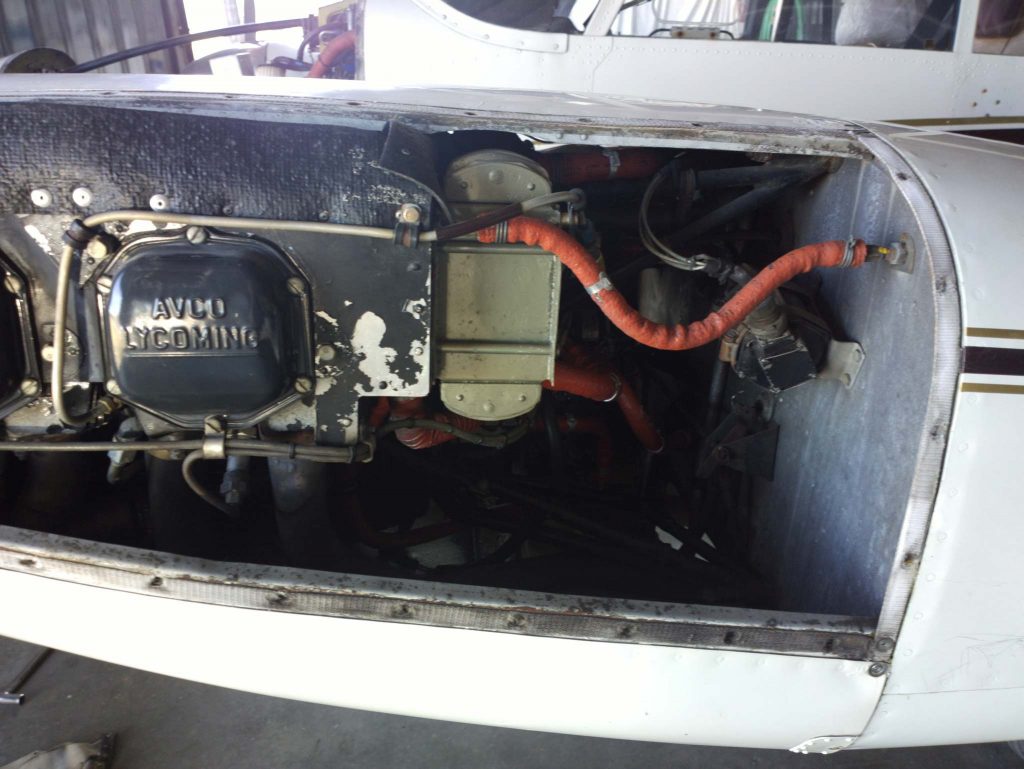
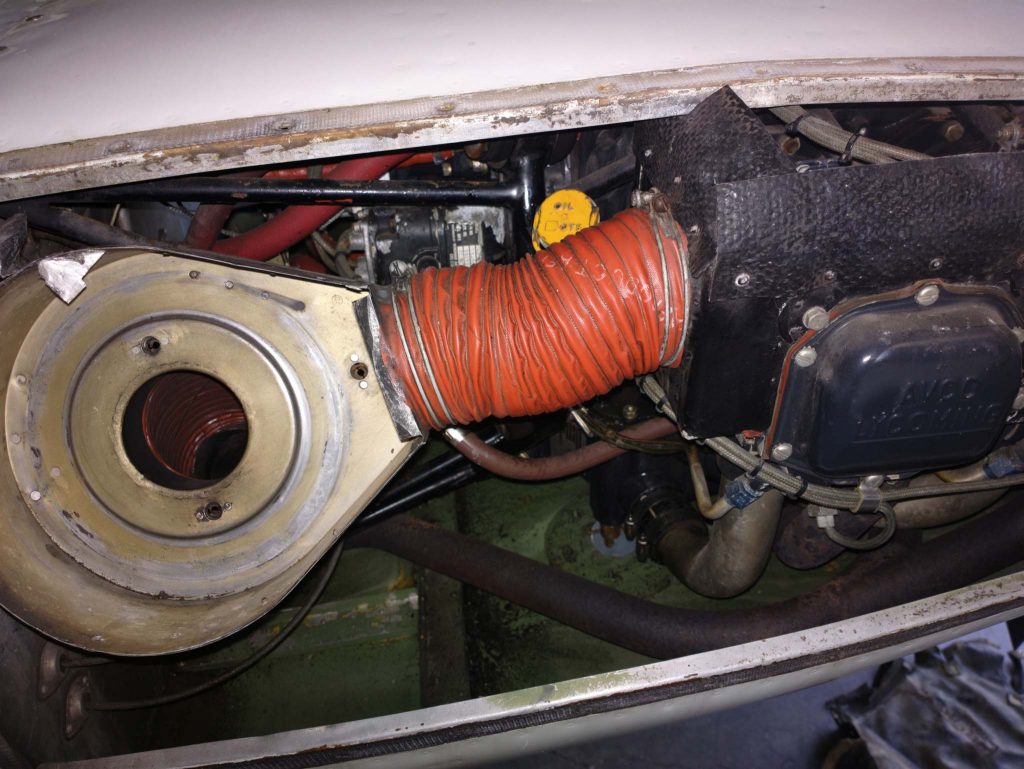
As a final point for the day we pulled off a bunch of inspection panels. The plan is that I’ll try my hand at touching-up some of these (ie removing corrosion, getting paint matched) and if I mess up too badly there are spares available. Photos of that to come.
After all that, we reassembled it, installed a spare panel to replace one that I’ve taken home, and called it a day.
